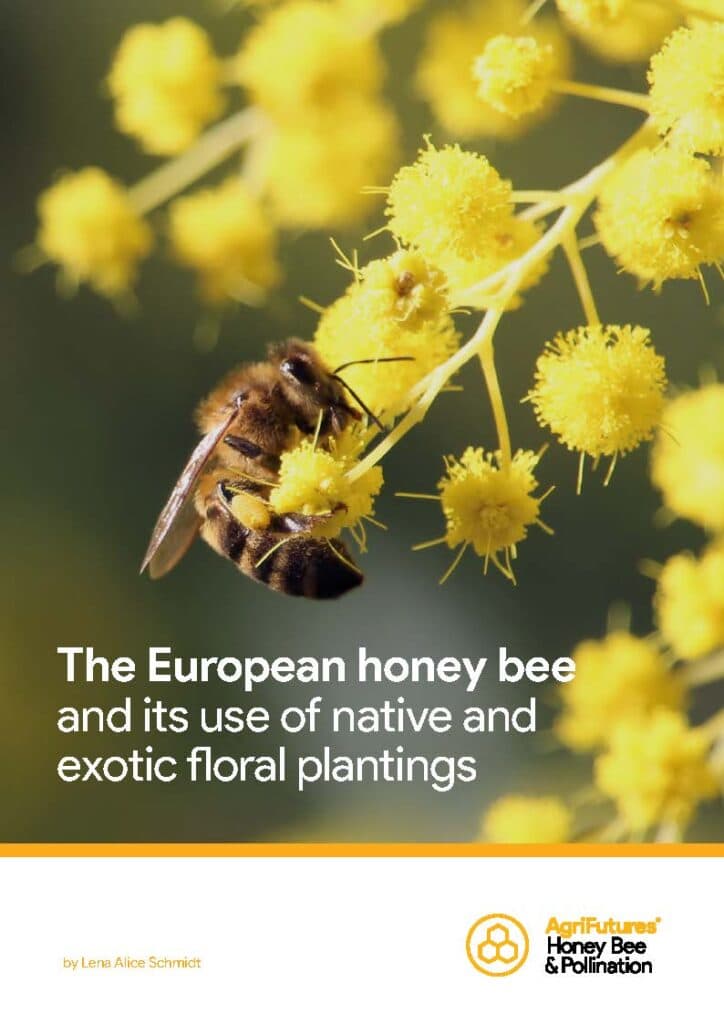National Honey Bee Breeding Strategy 2024-2029
In all livestock industries, genetic selection has been used to increase animal productivity and, by extension, enterprise profitability. The Australian honey bee industry is no...
 HONEY BEE & POLLINATION
HONEY BEE & POLLINATION 
14 pages
Published: 9 Dec 2021
Author(s): Lena Alice Schmidt
Download report PDF
DownloadHigh-quality and diverse floral resources are required throughout the year to support honey bee populations and therefore secure the delivery of vital pollination services in agroecosystems. Protein-rich pollen is key to bee nutrition and colony viability. A varied diet in the form of diverse pollen sources from multiple plant species ensures bee health and longevity, by providing the different types and amounts of amino acids required for growth and reproduction.
Yet in many agricultural landscapes, crops typically flower for only a short period, limiting floral resource availability and diversity. Additionally, the recent bushfires combined with widespread drought have further reduced floral resource availability in native habitats surrounding agricultural areas.
The protection and enhancement of natural habitats that provide floral resources is an increasingly promoted strategy that aims to support pollinator health and thereby promote pollination service delivery to target crops within agroecosystems. Establishing plots of flowering herbaceous plants is a prominent example of a strategy used to enhance floral resource availability, and such floral enhancements have been studied considerably over the last decade in Europe and the United States.
But despite this increasingly common approach, relatively little is known about the extent to which honey bees exploit and benefit from the floral resources associated with floral enhancements in Australia, and how the importance of these extra resources varies throughout the year. There is also almost nothing known about the suitability of Australian native plants for on-farm alternate floral resources, as all currently commercially available seed mixes comprise non-native species.
Knowing this knowledge gap existed, this project answered a series of key questions about how the European honey bee uses native and exotic floral enhancements: What non-crop floral resources are used by European honey bees and how does this change throughout the year? What are the key plant species used outside the crop flowering season? Do European honey bees preferentially forage for pollen from native or exotic plant species?
In the process of answering these questions, the project assessed pollen collected from honey bee hives. Foraging preferences and diets of honey bees were compared between flower plots comprising a native plant mixture, developed in collaboration with Greening Australia, and a commercially available exotic seed mix. The project further determined seasonal flowering patterns to identify any floral resource gaps.